Most of my posts have been about what to do, what to bring, and what you should expect from your developer. Here, I’d like to go over a few things on ways to annoy your designer, unless you don’t want to work with them of course. These can cause unneeded tension and issues in a project and your relationship with your developer.
1. Over-The-Shoulder Work
I know, you are really excited and want to be a part of the entire process and see the whole thing. Designers and developers don’t work this way, especially when highly creative solutions are needed.
I’ve worked with several clients, and some jobs in my early career, where this style of “management” was provided. I now have a strict policy against this, and so does almost every designer I’ve ever met.
It hampers creativity, slows us down, and honestly gets very annoying, none of which benefits you as the client. Think of having a backseat driver, it’s the same thing.
2. Over-state Your Knowledge

If you haven’t gone through the process of developing a new product, don’t say you have. The greatest developers are happy to work with the inexperienced, but we also aren’t a school.
Tell us when you don’t know or understand things, it makes for a much less frustrating experience for both parties. We don’t expect you to know everything about product development, that’s why you hired us in the first place.
3. Can’t You Just Photoshop it?
NO! I can’t just Photoshop a new vehicle design from that interesting building image you sent me. That request hasn’t happened yet, but I’m sure it will. This counts for anything tool-specific.
Unless you have experience designing with the specific tool and can do it yourself, then don’t assume that it’s just a quick thing you can throw together.
4. Tell them “It Shouldn’t Take You Long.”

It’s good to have an idea of how long a project will take, but as the designer, it’s our job to know how long something should take given your requirements. But what about that job you got done last time that the designer said took only 20 minutes?
It could have taken 3 hours, but maybe they wanted to sound impressive. Or maybe it took 20 minutes, but the reason you are talking to a new designer because the results weren’t what you really wanted.
It could have also required a completely different process to get a similar result. Product Development isn’t’ a simple process, otherwise, there wouldn’t be specialists that only focus on Product Development.
5. Expect Responses 24/7
If you are paying someone to be on call, then go for it. Most designers don’t work this way. I’ve had clients in the past that seemingly did not sleep and expected everyone around them not to either.
Great designers take time for themselves and don’t always respond immediately to a client. Prompt responses should always be given, but not at 3 am.
You want your designer to have a life outside of doing your work, it means they won’t burn out, and they’ll still have amazing and creative solutions for you in 30 years.
6. Change the Scope of Work
Once a project is underway, the scope should not change unless you are prepared for a change in cost and time. Through the years I’ve had many clients try to change the scope part way through a project and expect no extra costs or time to be spent in making it happen.
It disrupts things and causes problems everywhere, you can learn more on this post 9 Great Points on Scope Creep where I talk about keeping Scopes in line.
7. We aren’t Fiverr
If we were, you would have found us there. While you can get some design work, “$5 logo anyone?”, on Fiverr, it’s unrealistic to come to a product developer or designer with real experience based in the US and expect to get a super cheap price.
If you need something that cheap, go overseas or find a desperate student who will do it for the “exposure”. Quality can’t be bought for cheap, and if it does, is it really quality anymore?
Takeaway:
As a developer with years of experience, I can honestly say that some version of all of these has happened to me and that almost every designer or developer I know won’t like any of these things happening.
Smart developers and designers have found ways to avoid these issues while helping clients to get the best solution possible. Professionals at Peterman Firm know how to work with designers.
Setting expectations in the beginning and being open and honest about what is needed and expected sets the tone for a successful relationship that will bring your idea into reality and make you money.*
Your Next Steps
Concept Ideation With Designer
5 Ways to Use Concepting Ideation Effectively With Your Designer
Related Conscious Design BLOG Posts
3 Important Things to Consider When You Hire a Designer
Working with different clients, I learned that there are many things that I find important. One of these important things is how to make it easier when you hire a designer. I found out that these three things are crucial if you want to hire the best designer for your project.
3 Things You Need Before Hiring a Designer
I’ve been working with clients for over a decade, and I’ve found that there are three things I’m always asking for. Every Industrial Designer would love…
Differences between Concept and Design
What is the difference between a concept and a design? Well, a few things it turns out. We explain the differences in this blog post.


